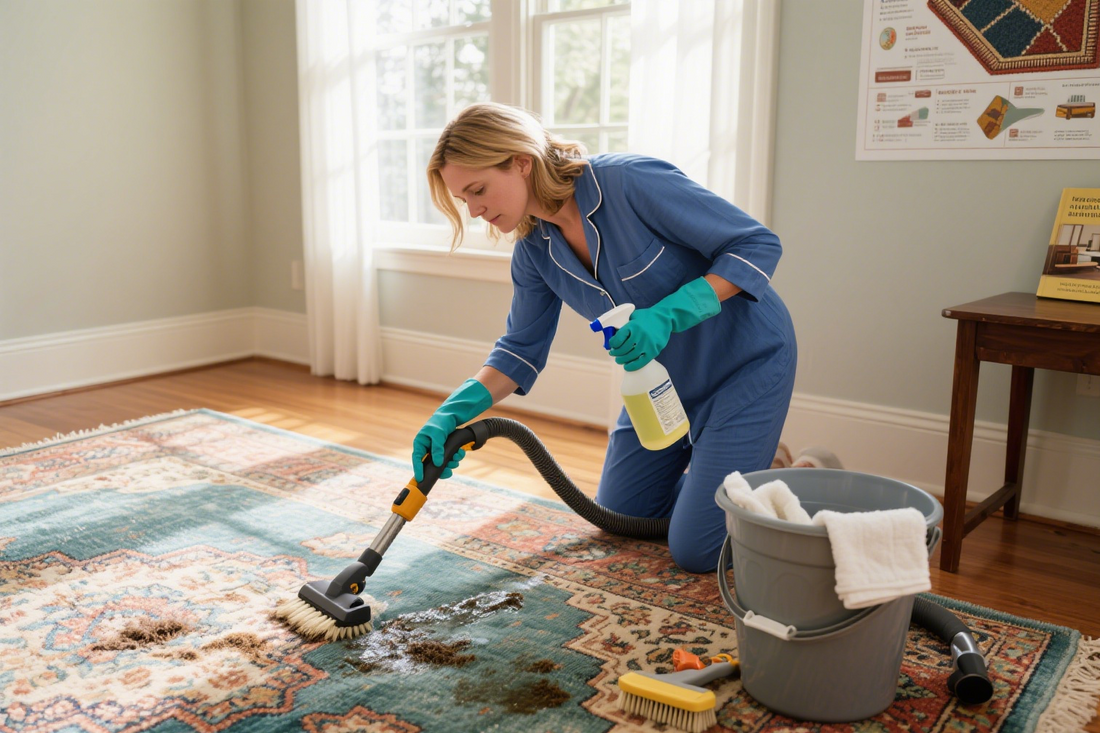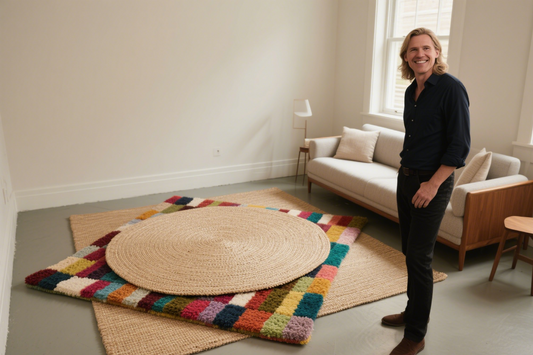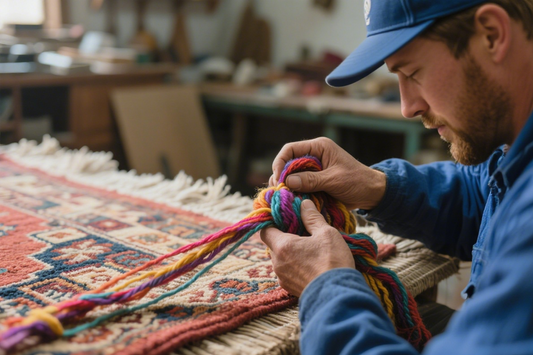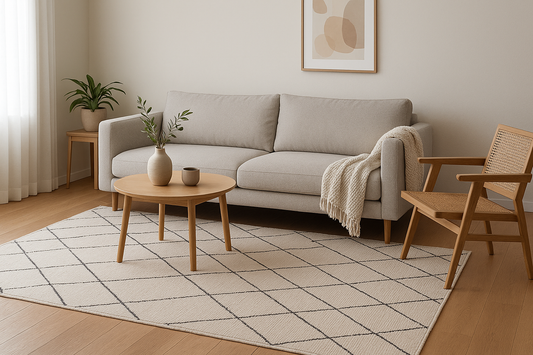A rug does more than just warm your toes—it sets the tone for your entire space. Whether it’s a statement piece in your living room or a soft surface in your child’s playroom, your rug deserves care and attention to keep it looking fresh and lasting for years. But rugs can take a beating from foot traffic, spills, dust, and even the sun.
In this comprehensive guide, we’ll walk you through practical ways to clean and maintain your rug based on material, placement, and lifestyle. Plus, we’ll share expert tips to extend its life—without expensive professional cleaning.
🧹 1. Start with Daily and Weekly Care
Routine maintenance is the first step in keeping your rug in top shape. Just like vacuuming your floor or wiping down surfaces, your rug needs consistent care to stay fresh.
Vacuum the Right Way
-
Frequency matters: Vacuum high-traffic areas 2–3 times a week, and low-traffic areas weekly.
-
Be gentle: Use a vacuum without a beater bar or with the suction set to low to avoid pulling fibers, especially for looped or woven rugs.
-
Vacuum both sides: If possible, flip the rug over and vacuum the back to remove embedded dirt and dust.
Spot Clean Immediately
Don’t wait for spills to settle. Use a clean cloth to blot (not rub!) the stain from the outside in.
-
Use mild soap or vinegar solution for most stains.
-
Test cleaners first on a small corner to avoid discoloration.
🧴 2. Deep Cleaning: When and How to Do It Right
Even with regular vacuuming, your rug needs a deep clean every 6–12 months depending on use.
How to deep clean at home:
-
For small rugs: Take them outside, shake off dust, then scrub gently with water and a mild detergent. Rinse thoroughly and air dry completely.
-
For larger rugs: Use a carpet cleaner or hire a professional every 12–18 months.
-
Steam cleaning: Only for rugs labeled as safe for moisture exposure.
💡 Pro tip: For washable rugs, toss them into your home machine. Check out our Washable Rug Collection designed for easy home care.
🧼 3. Know Your Rug Material: Care by Fiber Type
Different rug materials require different care strategies. Knowing your rug’s fiber helps prevent damage and preserve texture.
Cotton Rugs
-
Machine washable and breathable.
-
Ideal for homes with kids or pets.
-
Let air dry to prevent shrinking.
👉 Browse our Cotton Rug Collection for easy-clean styles.
Wool Rugs
-
Durable but sensitive to moisture.
-
Vacuum regularly, spot clean with a wool-safe cleaner.
-
Avoid hot water or steam cleaning.
Jute or Natural Fiber Rugs
-
Don’t soak—these materials absorb moisture quickly and warp.
-
Blot spills with a dry towel and brush gently with a dry sponge.
Synthetic (Polyester/Nylon) Rugs
-
Stain-resistant and durable.
-
Vacuum and spot clean as needed.
-
Some styles are machine washable—always check labels.
❌ 4. Common Rug Cleaning Mistakes to Avoid
Even the most well-intentioned cleaning can go wrong. Avoid these common mistakes to keep your rug looking like new:
-
Scrubbing stains instead of blotting: This spreads the stain and damages fibers.
-
Using bleach or harsh chemicals: Can cause discoloration or fiber breakdown.
-
Overwetting the rug: Traps moisture inside and leads to mold.
-
Skipping a rug pad: Without padding, rugs wear faster and slip easily. See why padding matters in our blog:
👉 Why Every Home Needs a Cozy Rug (and How to Find Yours)
🌞 5. Protect Your Rug from Sunlight, Furniture & Time
Maintenance isn’t just about cleaning—preservation is just as important.
Rotate Regularly
Rotate your rug every 3–6 months to avoid uneven wear, especially in high-traffic zones or rooms with direct sunlight.
Use Furniture Pads
Heavy furniture can cause crushing or dents in the rug’s pile. Felt pads distribute weight and prevent damage.
Block Direct Sunlight
UV rays can fade colors over time. Use curtains or blinds during peak sun hours, or rotate rugs exposed to windows more often.

📦 6. How to Store a Rug Properly
Not using your rug for a season? Store it correctly to prevent mold, moths, or creases.
Steps to store a rug:
-
Clean thoroughly before storing.
-
Roll, don’t fold, to avoid permanent creases.
-
Wrap in breathable fabric, like cotton or muslin—not plastic.
-
Store in a dry, cool area, elevated if possible.
-
Check every few months for moisture or pests.
🛋️ 7. When to Replace a Rug (And When to Revive It)
Even with the best care, no rug lasts forever. So how do you know when it’s time to retire or refresh?
Signs you may need to replace your rug:
-
Persistent odors that remain after cleaning
-
Visible thinning, tears, or unraveling
-
Stains that won’t come out or major discoloration
-
Loss of cushioning or backing damage
On the other hand, some rugs can be revived with a deep wash, trimming loose threads, or flipping to hide wear.
🛒 Final Thoughts: Long-Lasting Rugs Begin with Daily Habits
Rugs are an investment in comfort, style, and warmth. By building a regular maintenance routine, understanding your rug’s materials, and cleaning smart, you’ll extend your rug’s life by years—maybe even decades.
At Ustide, we design rugs with real-life durability and comfort in mind. Whether you're looking for a washable cotton rug, a natural jute piece, or a cozy accent for your child’s room, our collections make care easy and stylish.
👉 Explore our full Rug Collection
Your rug works hard. With the right care, it’ll look beautiful doing it for years to come.




